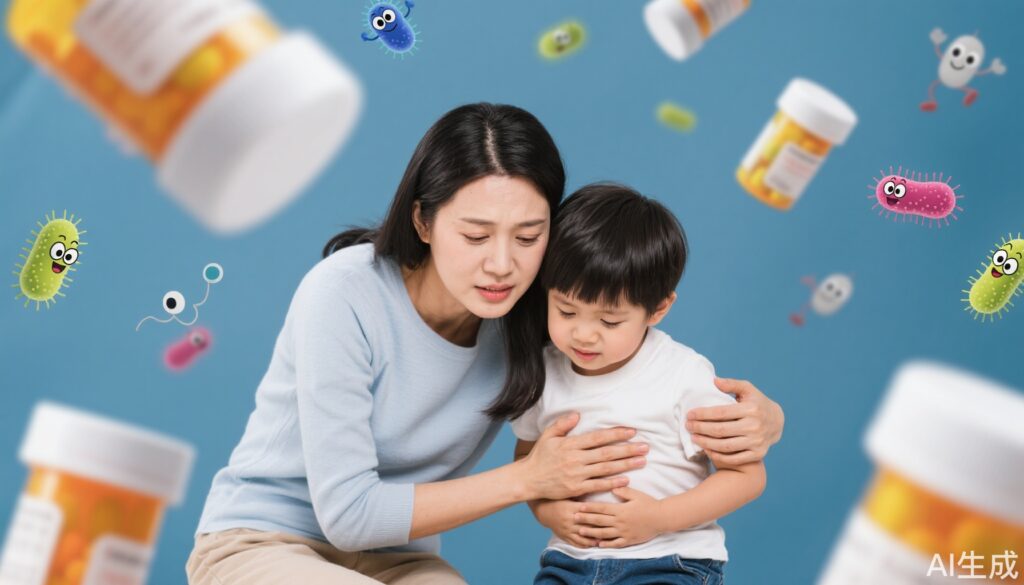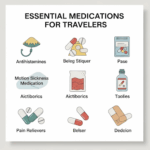Antibiotics are among the most commonly prescribed medications for children. They are powerful tools for fighting bacterial infections, but many parents notice a less welcome side effect: diarrhea. Studies show that up to 30% of children experience diarrhea while on or after antibiotics. But why does this happen, and what can parents and clinicians do to help?
Scientific and Clinical Evidence: What the Data Tell Us
To understand why antibiotics can cause diarrhea, we first need to look at the gut microbiome—the trillions of friendly bacteria that live in our intestines. These microbes play a vital role in digestion, immune function, and protecting us from harmful invaders. When a child takes antibiotics, the medicine doesn’t just kill the bacteria causing illness; it also disrupts the balance of good bacteria in the gut.
This disruption can allow harmful bacteria, such as Clostridioides difficile (C. diff), to flourish. C. diff produces toxins that irritate the gut lining, leading to diarrhea. However, most cases of antibiotic-associated diarrhea (AAD) are milder and result from the general imbalance in gut microbiota, not from specific pathogens.
A 2020 review in the journal Pediatrics found that the risk of diarrhea varies by the type of antibiotic, with broad-spectrum antibiotics (those targeting a wide range of bacteria) more likely to cause problems. Amoxicillin-clavulanate, for example, is notorious for causing loose stools in children.
Case Vignette: A Day in the Clinic
Consider Anna, a 4-year-old girl who recently had an ear infection. Her pediatrician prescribed a 7-day course of antibiotics. By day four, Anna’s mother noticed she was having frequent, loose stools. Worried, she wondered if Anna was allergic to her medication or if something more serious was going on.
Anna’s story is typical. Most cases of antibiotic-associated diarrhea are self-limited, meaning they resolve on their own once the course of antibiotics is finished. Serious complications are rare but can occur, especially in immunocompromised children or those with underlying health conditions.
Misconceptions and Harmful Behaviors
One common misconception is that all diarrhea during antibiotic use means an allergic reaction or a new infection. This is usually not the case. Another myth is that stopping the antibiotic early will make the diarrhea go away faster. In fact, incomplete courses of antibiotics can lead to treatment failure and antibiotic resistance.
Some parents turn to over-the-counter anti-diarrheal medications, but these are generally not recommended for young children and can make things worse by slowing down the gut. Finally, it’s important to avoid unnecessary use of antibiotics for viral infections, like most colds and flu, because this increases the risk of side effects without providing benefit.
Correct Health Practices and Practical Recommendations
So, what should parents and clinicians do when a child develops diarrhea after antibiotics?
1. Monitor and Hydrate: Most cases are mild and resolve on their own. Ensure the child stays well-hydrated. Offer small, frequent sips of water, oral rehydration solutions, or clear broths.
2. Continue the Antibiotic (Unless Advised Otherwise): Do not stop the medication unless instructed by a healthcare provider. Completing the course is crucial to fully treat the infection.
3. Consider Probiotics: Several studies suggest that certain probiotics (like Lactobacillus rhamnosus GG or Saccharomyces boulardii) can reduce the risk of antibiotic-associated diarrhea in children. Ask your doctor before starting any supplement, as not all probiotics are equally effective or safe for every child.
4. Watch for Danger Signs: Seek medical attention if diarrhea is severe, persistent, accompanied by high fever, blood in the stool, signs of dehydration (such as dry mouth, no tears when crying, or urinating less than usual), or if the child appears very ill.
5. Prevent Unnecessary Antibiotic Use: Only use antibiotics when prescribed by a qualified healthcare provider for confirmed or highly suspected bacterial infections.
Expert Insights and Commentary
Dr. Lee Wen, a pediatrician at a major children’s hospital, explains: “Antibiotic-associated diarrhea is one of the most common side effects we see in kids. The good news is that it’s usually mild and short-lived. By supporting the child’s hydration and, if appropriate, considering probiotics, we can often manage symptoms at home. The most important thing is to finish the prescribed antibiotic unless your doctor says otherwise.”
She adds: “Parents should feel empowered to ask their doctor about the necessity of antibiotics, potential side effects, and steps to support their child’s gut health.”
Conclusion
While antibiotics are essential for treating bacterial infections, they can disrupt a child’s gut microbiome and cause diarrhea. Most cases are not serious and resolve without intervention. The keys to management are hydration, completing the antibiotic course, and being alert for warning signs. Preventing unnecessary antibiotic use is equally important. Open communication between parents and clinicians can help ensure safe, effective care for children.
References
1. McFarland LV. Epidemiology, risk factors and treatments for antibiotic-associated diarrhea. Dig Dis. 1998;16(5):292-307.
2. Johnston BC et al. Probiotics for the prevention of antibiotic-associated diarrhea in children. Cochrane Database Syst Rev. 2011;(11):CD004827.
3. American Academy of Pediatrics. Managing Acute Gastroenteritis Among Children: Oral Rehydration, Maintenance, and Nutritional Therapy. 2019.
4. Centers for Disease Control and Prevention (CDC). Antibiotic Use in Children. 2023.



